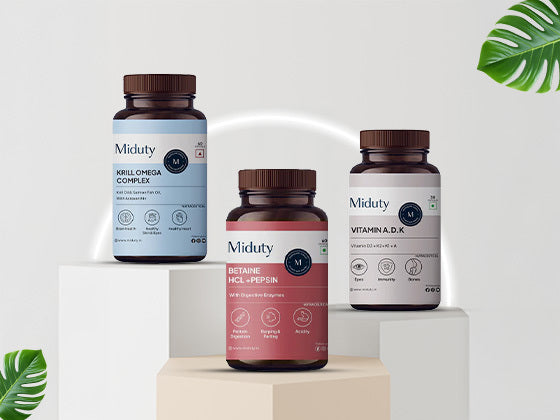Kojic acid is a natural ingredient and is widely used in many skin care products, such as soaps, creams, and serums. Known for its ability to brighten and even out skin tone, it is particularly effective in treating hyperpigmentation, dark spots, and acne scars. In this comprehensive guide, we will explore what kojic acid is, how it works, its benefits, and how to use it safely to achieve the best results. We will also address any potential risks and side effects, and answer frequently asked questions to help you make an informed decision about whether kojic acid is right for you and your skincare needs.
Introduction to Kojic Acid

Kojic acid is a natural ingredient and is a popular ingredient in many skin care products such as soaps, creams, and serums, and is known for its ability to brighten and even out skin tone. It is particularly effective in treating hyperpigmentation, dark spots, and acne scars. However it is always best to consult a doctor before trying any new product or ingredient for skin care. If you have an underlying skin concern like hyperpigmentation, dark spots, and acne scars and worried about it you can get an online dermatologist consultation at Clinikally from leading skin and hair experts in India hassle free.
The origin and discovery of Kojic Acid
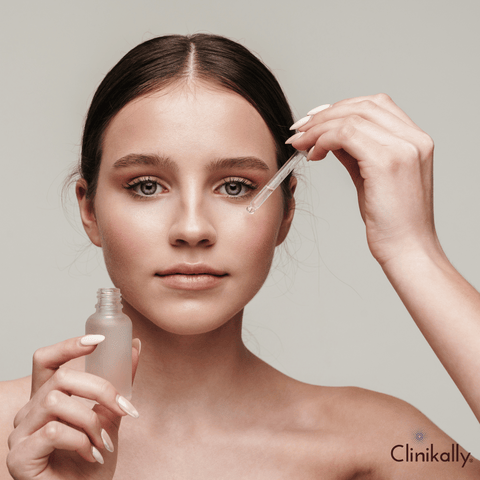
Kojic acid is a naturally occurring substance that is generated from many fungi, including Aspergillus oryzae. Because of its anti-aging and skin-lightening effects, it is frequently utilised in skincare products. It was originally discovered in Japan in 1907 when S. Shibata isolated it from a strain of Aspergillus oryzae while researching the fermentation of rice used to make sake, a traditional rice wine. When soy sauce, miso, and sake began to ferment, scientists discovered that the koji mould, or Aspergillus oryzae, was the cause. It was via Shibata's research that Kojic acid was discovered as a result of this fermentation process.
After being shown to have the ability to reduce melanin synthesis in the skin, kojic acid became a popular ingredient in skincare products to treat hyperpigmentation, dark spots, and other disorders brought on by an overabundance of melanin. It gained popularity as a component in skincare and cosmetic products that try to lighten skin tone and minimise the appearance of blemishes because of its capacity to inhibit tyrosinase, an enzyme involved in the formation of melanin. Due to its antibacterial qualities and prospective applications as a preservative or in food fermentation processes, its use in the food, medical, and agricultural industries eventually extended beyond skincare.
Kojic Acid in skincare history

The history of kojic acid in skincare revolves primarily around its properties as a skin-lightening agent and its ability to address hyperpigmentation issues.
Early Discoveries and Development:
-
Discovery in Japan: As previously stated, S. Shibata isolated Kojic acid in 1907 in Japan from Aspergillus oryzae, a type of fungus used in the fermentation process of sake (Japanese rice wine).
-
Recognising its Skin Benefits: Scientists began to recognise its potential in skincare in the 1980s and 1990s. Kojic acid has been shown in studies to inhibit tyrosinase, an enzyme important in the production of melanin, making it effective in reducing the appearance of dark spots, age spots, and other forms of hyperpigmentation.
Usage in Skincare:
-
Skin Lightening and Hyperpigmentation Treatment: Kojic acid became popular as an alternative to hydroquinone, a powerful skin-lightening agent with some safety concerns. Skincare companies began incorporating Kojic acid into a variety of products, including creams, lotions, serums, and soaps, to treat hyperpigmentation and achieve a more even skin tone.
-
Addressing Specific Skin Concerns: Kojic acid has been used in skincare formulations to treat acne scars, melasma, and other pigmentation-related issues in addition to hyperpigmentation. Its mild exfoliating properties also help to brighten dull skin and improve overall skin texture.
Challenges and Considerations:
-
Skin Sensitivity: While Kojic acid is generally thought to be safe, some people may experience skin irritation or allergic reactions to it. Its use at high concentrations or by people with sensitive skin may cause redness, itching, or a burning sensation.
-
Stability and formulation: Kojic acid degrades when exposed to air, light, or certain pH levels, which can reduce its effectiveness in skincare products. There are formulation challenges to ensure its stability and efficacy.
Regulations and Alternatives:
-
Regulatory Oversight: Due to the potential for side effects, different countries have different regulations regarding the concentration limits of Kojic acid in skincare products. Some jurisdictions may limit its use or the concentration permitted in over-the-counter products.
-
Alternative Ingredients: Due to concerns about skin sensitivity and stability, skincare companies have investigated alternative ingredients with similar skin-brightening properties, to improve stability and reduce irritation potential.
Despite its long history and effectiveness in treating hyperpigmentation, Kojic acid's use in skincare is constantly evolving as the industry seeks safer, more stable, and effective alternatives to address a wide range of skin concerns while ensuring user safety.
How Kojic Acid works

Kojic acid works by inhibiting the production of melanin, which is the pigment that gives our skin its colour. By slowing down the production of melanin, kojic acid can help to lighten and brighten the skin, reducing the appearance of dark spots and uneven skin tone. Additionally, kojic acid is also an antioxidant, which can help protect the skin from damage caused by free radicals.
Scientific Mechanism of Kojic Acid on Skin
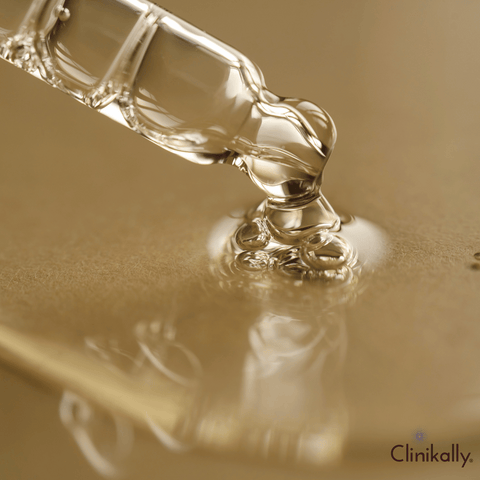
Kojic acid affects the skin primarily by inhibiting the production of melanin, the pigment responsible for skin, hair, and eye colour. Kojic acid works by interfering with the function of tyrosinase, a key enzyme involved in the synthesis of melanin. Here's a detailed explanation of Kojic acid's scientific mechanism on the skin:
-
Tyrosinase Inhibition: Tyrosinase is an enzyme that is essential in the production of melanin. It catalyses two important steps in the synthesis of melanin: the conversion of tyrosine to L-DOPA (dihydroxyphenylalanine) and then the conversion of L-DOPA to dopaquinone. Kojic acid works by inhibiting the activity of tyrosinase, disrupting these critical steps in the production of melanin.
-
Copper Ion Chelation: Tyrosinase contains copper ions that are required for its enzymatic activity. Kojic acid chelates or binds to copper ions, which are required for enzyme function. By binding to copper ions within the active site of tyrosinase, kojic acid inhibits the enzyme's ability to facilitate the conversion of substrates involved in melanin synthesis.
-
Melanin Formation Is Interrupted: By inhibiting tyrosinase and interfering with copper ions, kojic acid disrupts the normal melanin production process. This inhibition prevents melanin pigment formation in the skin, resulting in a reduction in the appearance of dark spots, hyperpigmentation, and overall skin lightening.
-
Anti-inflammatory and Antioxidant Effects: Moreover, kojic acid has some mild anti-inflammatory and antioxidant qualities. These properties may help to explain why it is beneficial for skincare because it reduces oxidative stress and soothes skin irritation caused by a variety of conditions such as UV exposure and indoor pollutants.
It's crucial to remember that although kojic acid is useful in decreasing the formation of melanin and treating hyperpigmentation, its strength and effectiveness might differ based on several variables, such as the amount of the ingredient used in skincare products, the kind of skin, and how often it is used. It is best to use products containing Kojic acid as indicated and to conduct a patch test before regular usage, especially for people with sensitive skin, as high concentrations of the acid may raise the risk of skin irritation or sensitivity. It is advised to speak with a dermatologist or other skincare specialist to find out how to utilise Kojic acid products safely and appropriately.
Comparison with other skin-brightening agents
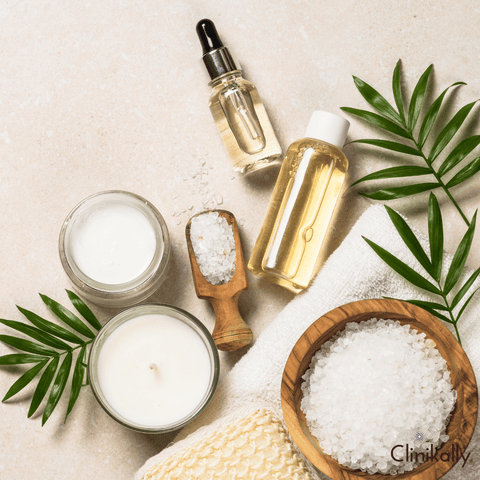
Kojic acid is one of several skin-brightening agents found in cosmetics. Comparing it to other commonly used skin-brightening agents reveals differences, benefits, and potential drawbacks:
-
Hydroquinone: Hydroquinone, like Kojic acid, works by inhibiting tyrosinase and thus reducing melanin production. Hydroquinone is generally thought to be more effective than Kojic acid in skin lightening. The possibility of side effects like skin irritation, ochronosis (a skin condition that causes bluish-black pigmentation), and long-term safety have led to stricter regulations regarding hydroquinone in some areas. Hydroquinone may have negative effects when used at higher concentrations or for longer periods, especially in people with sensitive skin.
-
Vitamin C (Ascorbic Acid): Ascorbic acid, acts as an antioxidant and prevents melanin synthesis, inhibits tyrosinase activity, and reduces oxidative stress. Vitamin C contains antioxidants that help protect the skin from free radical damage caused by UV exposure and environmental pollutants, in addition to skin-brightening properties. The stability of vitamin C in skincare formulations can be a challenge because it degrades when exposed to light, air, or certain pH levels.
-
Alpha-Arbutin: Alpha-arbutin, like Kojic acid and hydroquinone, inhibits tyrosinase and thus prevents melanin synthesis. Alpha-arbutin is a milder alternative to hydroquinone and is generally well-tolerated, with a lower risk of side effects such as skin irritation. While less potent than hydroquinone, alpha-arbutin is known for its formulation stability and ability to brighten the skin with consistent use.
-
Licorice Extract (Glabridin): Licorice extract's glabridin works by blocking tyrosinase activity, which brightens and lessens skin pigmentation. Licorice extract has anti-inflammatory qualities as well, making it advantageous for people with sensitive or irritated skin. In comparison to some other brightening agents, such as hydroquinone, licorice extract is generally well-tolerated and regarded as a gentler option.
Important considerations for comparing skin-brightening treatments include efficacy, safety profile, formulation stability, and potential side effects. Every ingredient may have benefits and drawbacks, and the individual's skin type, concerns, and tolerances often play a role in the choice of any given agent. Based on a person's needs and after weighing the advantages and disadvantages of various products, a dermatologist or skincare specialist can assist in choosing the best skin-brightening regimen and product.
The benefits of Kojic Acid
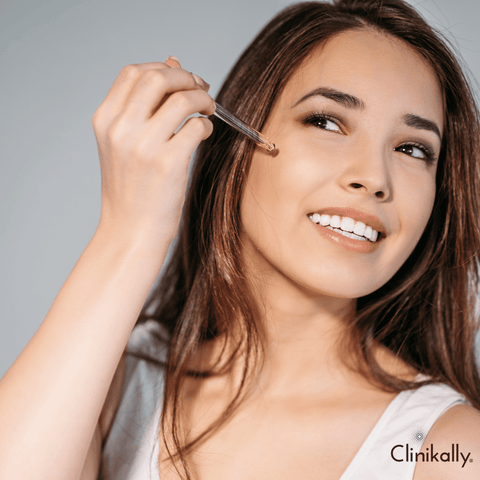
Kojic acid is a great ingredient for skincare products since it can prevent the generation of melanin and treat a range of hyperpigmentation-related skin issues. The main advantages of kojic acid are as follows:
-
Brightening and even skin tone: Kojic acid is known for its ability to lighten and brighten the skin, which can help to reduce the appearance of dark spots and uneven skin tone.
-
Treating hyperpigmentation: Kojic acid is particularly effective in treating hyperpigmentation, which is the excessive darkening of certain areas of the skin.
-
Reducing acne scars: Kojic acid can also help to reduce the appearance of acne scars by lightening the affected areas.
-
Anti-aging properties: Kojic acid is also an antioxidant, which can help protect the skin from damage caused by free radicals and has anti-ageing property. This can help to reduce the appearance of fine lines and wrinkles and give the skin a more youthful appearance.
Individual outcomes may differ, and although kojic acid has many advantages, its efficacy may be influenced by several variables, such as the concentration utilised, the stability of the formulation, and the skin's reaction. Using Kojic acid-containing products also requires regular use and good skincare habits, such as applying sunscreen, to get the best benefits. Speaking with a dermatologist can give you tailored advice on how to use Kojic acid in your skincare regimen, depending on your unique needs and skin concerns.
Kojic Acid for hyperpigmentation

Kojic acid is a well-known ingredient found in skincare products that address hyperpigmentation. Its ability to inhibit melanin production, the pigment responsible for skin colour, accounts for its efficacy in treating hyperpigmentation. Here are some ways Kojic acid can help with hyperpigmentation:
-
Tyrosinase Activity Is Inhibited: Tyrosinase is an enzyme that is essential in the production of melanin. Kojic acid inhibits the function of this enzyme, reducing melanin synthesis in the skin. By inhibiting tyrosinase, Kojic acid helps to prevent excessive melanin production, resulting in a lightening effect on hyperpigmented areas.
-
Reduces Dark Spots and Uneven Skin Tone: Hyperpigmentation, caused by increased melanin production, frequently manifests as dark spots, patches, or uneven skin tone. The ability of kojic acid to regulate melanin production can help fade these dark spots, resulting in a more even skin tone with continued use.
-
Treats Specific Types of Hyperpigmentation: Kojic acid has been used to treat various types of hyperpigmentation, including post-inflammatory hyperpigmentation (PIH) caused by acne, sunspots or age spots caused by sun exposure, and melasma, a condition characterised by brown or greyish patches on the skin, most commonly on the face.
-
Brightens and Evens Skin Tone: Using Kojic acid in skincare products regularly can help to brighten the skin overall, resulting in a more radiant and uniform complexion by reducing the appearance of dark spots and patches.
It is noteworthy that although Kojic acid is beneficial in the treatment of hyperpigmentation for many people, its effectiveness and potency may differ depending on formulation stability, skin sensitivity, and concentration used. Furthermore, it can take several weeks or months of continuous use to see appreciable changes in hyperpigmentation. When Kojic acid is used in high doses or by people with sensitive skin, it might cause adverse effects such as skin irritation, redness, or sensitivity. The likelihood of negative responses can be reduced by doing a patch test and using Kojic acid-containing products based on dermatologist or skincare expert recommendations. Combining Kojic acid with other complementary skincare ingredients, such as antioxidants or sunscreen, can boost its efficacy in addressing hyperpigmentation while also providing additional skin benefits and protection against further damage. Consultation with a skincare expert can assist in developing a personalised regimen tailored to specific skin concerns and needs.
Anti-aging effects of Kojic Acid
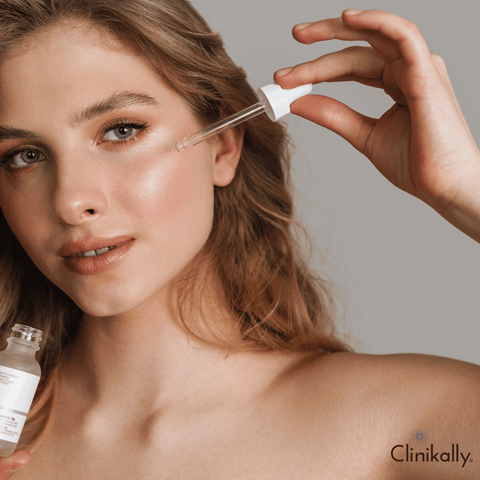
Kojic acid, best known for its skin-lightening properties, is not widely recognised as a direct anti-aging ingredient in the same way that retinoids or peptides are. However, some indirect benefits of Kojic acid in skincare may contribute to anti-aging effects:
-
Reducing Hyperpigmentation: Age spots, sunspots, and other types of hyperpigmentation can all contribute to an aged appearance. Kojic acid's ability to inhibit melanin production can help fade these pigmented areas, resulting in a more even skin tone and a rejuvenated appearance.
-
Improved Skin Texture: Kojic acid has mild exfoliating properties. Regular use may encourage skin cell turnover, resulting in smoother, more refined skin texture. Exfoliation can also help to reduce the appearance of fine lines and wrinkles over time.
-
Brightening Effect: Kojic acid can give the complexion a more radiant appearance by minimising dark spots and uneven pigmentation. A skin tone that is more luminous and radiant can give the appearance of youth.
-
Antioxidant Properties: Kojic acid has some antioxidant properties, albeit not as much as specific antioxidant ingredients like vitamin C or E. Antioxidants support the fight against oxidative stress and free radicals, two conditions that contribute to skin damage brought on by environmental stressors and premature ageing.
It's important to remember, though, that anti-aging is not the main goal of kojic acid in skincare products. More specifically linked to tackling ageing symptoms including fine lines, wrinkles, collagen formation, and general skin firmness are other well-known anti-aging substances, including retinoids, peptides, hyaluronic acid, and antioxidants like vitamin C. It's typical to use a combination of substances in anti-aging skincare products that address several facets of skin ageing. While targeting specific issues like hyperpigmentation and skin texture may indirectly contribute to a more youthful appearance, kojic acid is more frequently used in combination with other anti-aging substances in full skincare regimes. Those looking for anti-aging benefits should think about taking a balanced approach, combining a range of anti-aging ingredients that have been shown to work, and speaking with a dermatologist or skincare specialist to create a customised regimen catered to their unique requirements and concerns.
How to use Kojic Acid
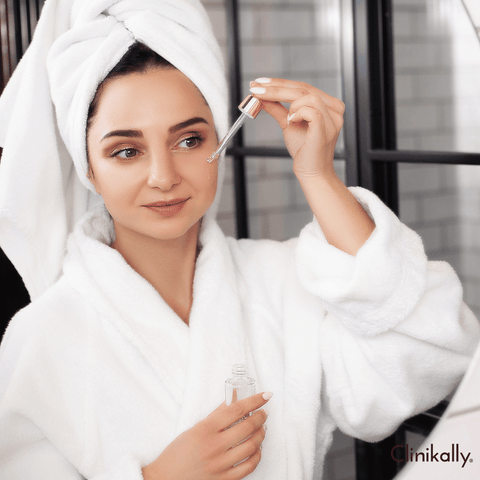
To maximise its benefits and reduce the possibility of negative reactions, Kojic acid should be used with caution in your skincare regimen. This is a detailed how-to for using Kojic acid:
-
Kojic acid soap: Kojic acid soap is a popular way to use kojic acid for skin lightening. It is typically used once or twice a day, and should be left on the skin for at least one minute before rinsing off.
-
Kojic acid serum: Kojic acid serum is a concentrated form of kojic acid that can be applied directly to the skin. It is typically used once or twice a day, and should be applied after cleansing and before moisturising.
-
Kojic acid cream: Kojic acid cream can be used in place of a moisturiser, and is typically used once or twice a day.
Recall that every person reacts differently to Kojic acid, and it could take a few weeks or months before hyperpigmentation significantly improves. For individualised advice and recommendations, it is advised to speak with a dermatologist before introducing Kojic acid into your skincare regimen, particularly if you have certain skin concerns or sensitivities.
Best practices in applying Kojic Acid products

To maximise effectiveness and reduce the risk of adverse reactions when using Kojic acid-containing skincare products, best practises must be followed. Here are some suggestions for using Kojic acid products:
-
Perform a Patch Test: Perform a patch test before applying any Kojic acid product to your face or a larger area of your skin. Apply a small amount of the product to a less sensitive area, such as the inner forearm, and wait 24-48 hours for any negative reactions, such as redness, itching, or irritation.
-
Start slowly: If the patch test reveals no adverse reactions, use the Kojic acid product sparingly at first, gradually increasing usage as your skin tolerates it. Begin with a lower application frequency (e.g., every other day) to give your skin time to adjust.
-
Observe Product Instructions: Whenever possible, read and abide by the Kojic acid product's instructions. Take note of the recommended frequency of use, application guidelines, and any precautions or warnings.
-
Use sunscreen: Kojic acid can make your skin more sensitive to sunlight. It is critical to use a broad-spectrum sunscreen with an SPF of 30 or higher daily, especially when using Kojic acid products. Sunscreen shields your skin from harmful UV rays and helps prevent additional pigmentation issues caused by sun exposure.
-
Apply to Clean, Dry Skin: Before using Kojic acid products, thoroughly wash your face or the targeted area. To maximise absorption, make sure the skin is dry before applying the product.
-
Consider Evening Use: Some people prefer to use Kojic acid products in the evening or as part of their nighttime skincare routine. This allows the product to work without being exposed to sunlight overnight, potentially lowering the risk of photosensitivity.
-
Moisturize: To keep your skin hydrated, use a gentle, non-comedogenic moisturiser after cleansing. Kojic acid products may cause dryness or irritation in some people, so using a moisturiser can help maintain skin balance.
-
Be Consistent: When using Kojic acid products, consistency is essential. Results may take several weeks or months to become apparent. Avoid abrupt discontinuation unless you are experiencing adverse reactions, and always consult a dermatologist if you have any concerns.
-
Limit Use with Other Harsh Ingredients: Avoid using harsh exfoliants or other potent skincare ingredients (such as retinoids or strong acids) alongside Kojic acid, as this may increase skin sensitivity or irritation.
Always pay attention to your skin's needs, and stop using anything if it becomes irritated, red, or uncomfortable. It is best to speak with a dermatologist or other skincare specialist before adding kojic acid to your regimen, particularly if you have sensitive skin or certain skin issues.
Combining Kojic Acid with other skincare ingredients
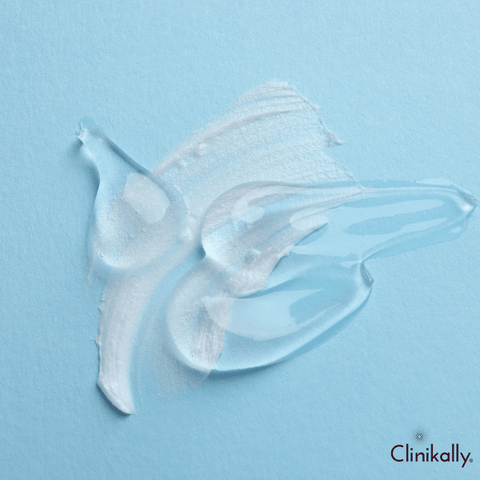
To treat various skin issues, kojic acid can be combined with other components found in skincare products. It's crucial to comprehend how various substances work together and whether their effects balance or complement one another. When mixing Kojic acid with other skincare components, keep the following in mind:
-
Vitamin C (Ascorbic Acid): Skin-brightening properties are shared by kojic acid and vitamin C. The reduction of hyperpigmentation and promotion of a more even skin tone may be amplified by combining them. However, some people with sensitive skin may experience irritation when using these potent ingredients at the same time. It is best to start slowly and monitor how your skin reacts.
-
Glycolic Acid or AHAs (Alpha Hydroxy Acids): Glycolic acid and other AHAs are exfoliating agents that can improve skin texture and reduce pigmentation. The combination of Kojic acid and AHAs may improve exfoliation and skin renewal. However, for those with sensitive skin, this combination may irritate. It is critical to monitor your skin's reaction and adjust your usage accordingly.
-
Niacinamide: Niacinamide is well-known for its anti-inflammatory and skin-brightening properties. It is a good combination, especially for people with sensitive skin, since it can balance out the whitening effects of kojic acid while also assisting in reducing any potential irritation.
-
Hyaluronic Acid: Hyaluronic acid is a hydrating ingredient that aids in the retention of moisture in the skin. Using it in conjunction with Kojic acid can help keep skin hydrated and reduce any potential dryness or irritation caused by Kojic acid.
-
Sunscreen: It is important to combine Kojic acid with a broad-spectrum sunscreen. Kojic acid may make skin more sensitive to the sun, and sunscreen shields the skin from damaging UV rays, which helps to stop further pigmentation problems.
-
Retinoids: Retinoids are well-known for their anti-aging and skin-renewing qualities. Examples of these include retinol and prescription-strength retinoids. Using both together may raise the risk of skin irritation because of their individual exfoliating properties, even though they might not interact directly with Kojic acid. It is best to use them every other day or seek advice from a dermatologist.
-
Antioxidants: Antioxidants such as vitamin E or green tea extract help balance out the effects of Kojic acid by scavenging free radicals and shielding the skin from harm from the environment.
It is important to start cautiously when mixing ingredients for skincare, pay attention to how your skin reacts, and modify the regimen as necessary. People who have sensitive skin should exercise extra caution and might find it helpful to see a dermatologist develop a customised skincare routine that takes into account their unique skin type and concerns.
Potential risks and side effects of Kojic Acid
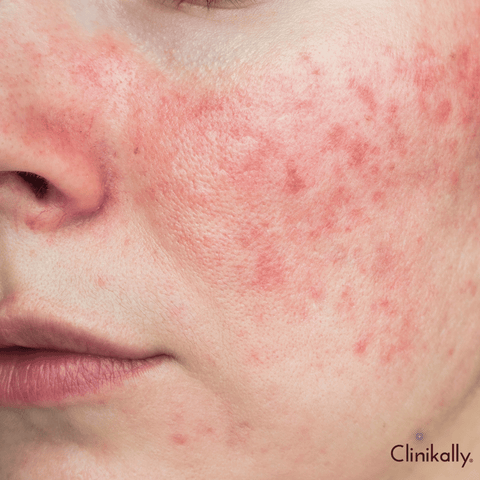
Even though kojic acid is frequently used in skincare products due to its ability to brighten skin, it's crucial to understand any possible hazards and adverse effects before using it:
-
Kojic acid is generally considered to be safe for use on the skin. However, some people may experience mild skin irritation or dryness when using kojic acid products.
-
Kojic acid can increase the skin's sensitivity to the sun, so it is important to use a sunscreen when using kojic acid products.
-
Kojic acid may also cause mild redness or itching in some people.
-
Kojic acid has not been shown to cause cancer.
After taking Kojic acid, if you continue to have severe or chronic skin responses, stop using it and see a dermatologist for a proper assessment and advice. They can offer tailored guidance and suggest appropriate substitutes according to the requirements of your skin.
Understanding skin sensitivity to Kojic Acid

Individual differences exist in their sensitivity to Kojic acid because of several factors, such as skin type, the amount of Kojic acid used, how often it is applied, and general skin health. This is a summary of the signs and symptoms of kojic acid skin sensitivity, along with some variables that may affect it: skin type, kojic acid concentration, application frequency, additional components, barrier function, and skin health. If you take Kojic acid and have severe or ongoing skin reactions, stop using it and get advice from a dermatologist or skincare specialist. They can minimise the possibility of negative responses while making tailored recommendations and assisting in determining the best course of action for your skin conditions.
Long-term use and safety of Kojic Acid
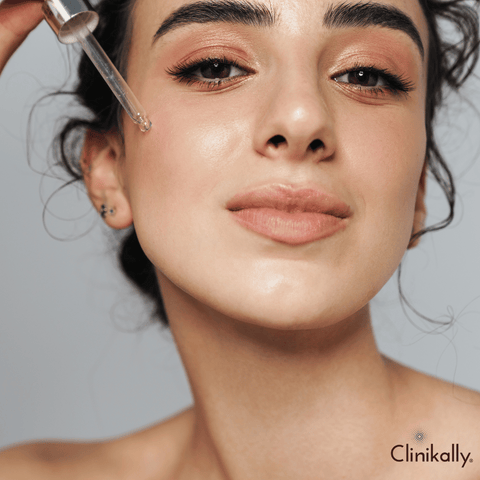
The long-term use and safety of Kojic acid in skincare products have piqued the interest and concern of users and researchers. Here are some important points about its long-term use and safety:
-
Skin Irritation and Sensitivity: Prolonged or excessive use of Kojic acid-containing products can cause skin irritation, redness, itching, or a burning sensation, especially in people with sensitive skin. These reactions may occur if the skin's tolerance threshold is exceeded or if higher concentrations of Kojic acid are used.
-
Photosensitivity: Kojic acid can make your skin more sensitive to sunlight. Prolonged sun exposure without proper sun protection (sunscreen) while using Kojic acid products may increase the risk of sunburn or other UV-related skin damage. This highlights the importance of using sunscreen consistently when incorporating Kojic acid into a skincare routine.
-
Allergic Reactions: While rare, some people may be allergic to Kojic acid, resulting in allergic contact dermatitis or other allergic reactions. Before using Kojic acid-containing products on larger skin areas, perform a patch test to identify potential allergic reactions.
-
High Concentration Potential Side Effects: Higher concentrations of Kojic acid in skincare products are associated with a higher risk of adverse reactions. Long-term use of high-concentration products may increase the likelihood of skin irritation, dryness, or redness.
-
Skin Depigmentation: Prolonged and excessive use of Kojic acid may cause skin depigmentation or hypopigmentation in some people, especially those with darker skin tones. This effect is more commonly associated with high concentrations of Kojic acid products or improper use.
-
Regulatory Considerations: The maximum allowable concentration of Kojic acid in skincare products differs by country. Some regions limit their concentration due to safety concerns and the possibility of adverse reactions.
-
Alternatives and Rotation: To reduce the risk of sensitization or irritation caused by long-term use, some people rotate or alternate Kojic acid-containing products with other skin-brightening ingredients.
-
Consultation with a Dermatologist: A dermatologist or skincare expert should be consulted by anyone who has concerns about using the product for an extended period or who consistently experiences skin responses. In addition to monitoring skin health and offering advise, they can suggest appropriate products or alternative therapies based on each person's unique needs.
Although hyperpigmentation and skin discoloration can be effectively treated with kojic acid, long-term safety depends on appropriate use, following suggested dosages, and closely monitoring skin reactions. It's advised to use Kojic acid products carefully, according to product directions, and give priority to skincare routines that support skin health and protection to reduce any hazards connected with long-term use. It is advised to speak with a healthcare provider for specific guidance and to address any issues about extended use.
The bottom line: Is Kojic Acid right for you?

In conclusion, kojic acid is a powerful natural ingredient that can be beneficial for those looking to improve their skin's appearance. It can help to brighten and even out skin tone, reduce the appearance of dark spots and hyperpigmentation, and even out acne scars. Additionally, kojic acid is also an antioxidant, which can protect the skin from free radical damage. However, as with any new product, it is important to start with a patch test and use it as directed to avoid any potential irritation. As always, it's recommended to consult with a dermatologist before using any new skincare product, particularly if you have sensitive skin. With its many benefits, kojic acid may be a great addition to your skincare routine, but it's important to use it responsibly and in the right concentration to see optimal results.
Evaluating skin type and condition for Kojic Acid use
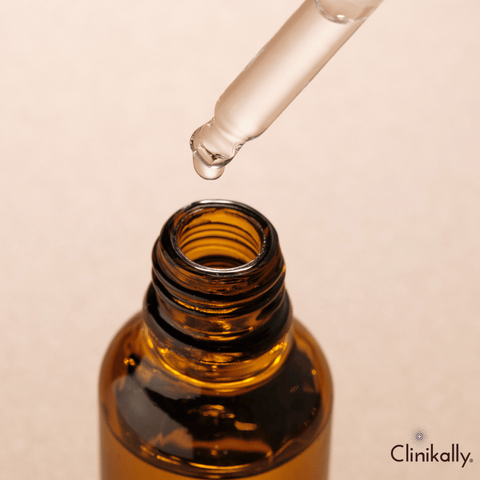
It's important to evaluate your skin type and condition before using Kojic acid in your skincare regimen. Knowing your skin type and particular concerns can help you decide if Kojic acid is right for you and how to utilise it properly. This article explains how to assess your skin's characteristics, including type, issues, and substance sensitivity.
Based on this evaluation:
-
If you have sensitive skin, you should use Kojic acid with caution. Begin with lower concentrations and work your way up if your skin tolerates it well. Consider incorporating soothing ingredients or seeking advice from a dermatologist.
-
Kojic acid may help with post-inflammatory hyperpigmentation caused by acne if you have oily or acne-prone skin. Consider combining it with other acne-fighting ingredients, but avoid overly drying formulations.
-
Kojic acid should be used with caution if you have dry or sensitive skin because it can cause dryness or exacerbate sensitivity. To keep skin moisturised, use hydrating products in conjunction with Kojic acid.
-
You can incorporate Kojic acid into your routine in general, but start slowly and monitor how your skin reacts. Consider combining it with hydrating or soothing ingredients for well-rounded care.
Always adhere to the directions on the product, and gradually add Kojic acid to your routine so you can gauge how it affects your skin. To find the ideal strategy for your skin type and condition, consult a dermatologist or skincare specialist if you're unsure or have specific skin concerns.
When to consult a dermatologist about Kojic Acid

Consultation with a dermatologist about Kojic acid use is advised in several situations, particularly if you have specific concerns or experience certain reactions. Here are some situations in which consulting a dermatologist about Kojic acid is advised:
-
Persistent Skin Reactions: If you experience persistent or severe skin reactions such as redness, itching, burning, or irritation after using Kojic acid-containing products, it's essential to consult a dermatologist. These reactions could indicate an allergy, or sensitivity, or that Kojic acid is not suitable for your skin.
-
Skin Condition Worsening: If using Kojic acid appears to worsen your skin condition, such as increased dryness, peeling, or heightened sensitivity, consult a dermatologist. They can assess the situation and make recommendations for changes to your skincare routine.
-
Unusual Changes in Pigmentation: Seek dermatological advice if you notice unusual changes in pigmentation, such as hypopigmentation (lightening of the skin) or other discoloration issues that appear to be associated with the use of Kojic acid. This is especially important for people with darker skin tones, as they may be more susceptible to certain pigmentary changes.
-
Allergic Reactions or Dermatitis: Consult a dermatologist if you suspect an allergic reaction or develop contact dermatitis after using Kojic acid-containing products. They can perform allergy testing or patch testing to identify specific allergens and recommend appropriate alternatives.
-
Pregnancy or Breastfeeding: If you are pregnant or breastfeeding, you should consult a healthcare professional, including a dermatologist, before using Kojic acid or any new skincare product. Some ingredients may not be recommended during pregnancy or breastfeeding due to potential risks.
-
Chronic Skin Conditions: Before adding kojic acid to their skincare regimen, people with long-term skin conditions like rosacea, psoriasis, or eczema should speak with a dermatologist. Certain skincare ingredients may cause adverse reactions in certain conditions; seeking professional advice can help prevent these conditions from getting worse.
-
Personalised Skincare Recommendations: A dermatologist can offer customised advice and recommendations based on your skin's needs if you are not sure if Kojic acid is good for your skin type or if you have particular concerns or goals about hyperpigmentation, skin brightening, or anti-aging.
Dermatologists are experts in skincare ingredients, conditions of the skin, and available treatments. Consulting with them can offer insightful advice, tailored suggestions, and assistance in resolving any issues or negative effects related to using kojic acid.



